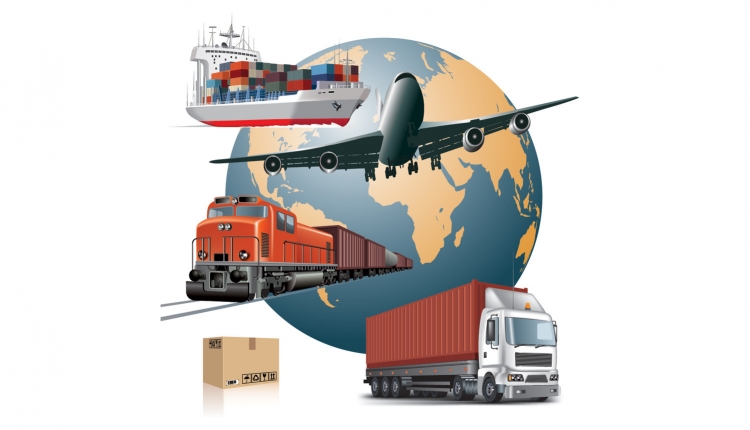
Amazon is seriously pursuing drones to perform same-day delivery, and its drivers in New York City even use the subway to ensure they meet a one-hour delivery promise in that region. Target is offering AM/PM delivery (i.e., order in the morning, and receive by end-of-day) through courier companies, who typically use vans. Macy's is offering scheduled same-day delivery (i.e., pick a window) using Deliv, whose independent contractors drive their own cars. Walmart has launched its answer to Amazon Prime, and is testing in-store lockers for wait-free "click-and-collect" (i.e., order online, and pickup in the store from a locker, instead of waiting in line at customer service, waiting for it to be delivered, or searching the aisles to find it). Planes, trains, automobiles, vans, lockers — any and every mode — is being tested by retailers in their quest to get consumers their ecommerce purchases as fast as possible.
The traditional approach of Walmart, Target, and Macy's — stocking products across a wide range of complementary categories s— made them both convenient shopping destinations and the largest retailers in the world, in terms of sales. But these and other big retailers, from Best Buy to Home Depot, Sears, and Toys R Us (all of whom offer "click-and-collect" delivery through their customer service desks), decided that competing in the ecommerce game requires speed. And while it's encouraging that they are aspiring to meet on-demand, "my way" consumer expectations, with the exception of Amazon (who's offering lockers, one- and two-hour and AM/PM service levels), all of them are missing convenience in their ecommerce fulfillment process. And as a result, they're risking losing their hard-won, long-term customer allegiance.
These retailers are justified in their desperate desire to be "in the game" from the outset, instead of responding years late, or not at all, as they did the last two times that shipping innovation came around: first, Amazon's original offer of free ground delivery, and then, free two-day delivery when Amazon Prime launched in 2005. They are essentially following The Boston Consulting Group's 2014 advice and minimizing their investment by experimenting in a few select markets and working with a single provider that is more often than not an emerging company (i.e., Deliv with Macy's, or Postmates with Apple). They may even be subsidizing the price that consumers pay for delivery while they try to "figure out" how to actually make the purchase pay for itself.
Because the emerging delivery providers offer only one service level, retailers can't provide consumers with the option to choose a service level that's convenient to their needs: "click-and-collect," one- or two-hour on-demand, AM/PM, scheduled, or even two-person for difficult-to-handle items. "Click-and-collect" is obviously the most cost effective option to a business, but it is also the most inconvenient for the consumer, particularly when it involves not only going to the store, but then waiting in a customer service line where people are asking questions, making returns, signing up for credit cards, and more; lockers are faster, and therefore more convenient for consumers.
Business-to-business (B2B) companies that have long offered same-day delivery already know that customers rarely select one-hour service, and instead opt for AM/PM, which costs a lot less — a savings that is passed along to them. With sufficient volume and density, AM/PM can become comparable in cost to discounted UPS Ground "Zone 1" delivery — not to mention the fact that the associated fulfillment process is cheaper and is less sensitive to performance issues, since it is less urgent. Charging more for the premium service levels (i.e., one- and two-hour, or scheduled), which consumers rarely need, can eventually help to defray the cost of building lockers and even subsidize the price presented to consumers for AM/PM delivery.
Aside from Amazon, Target is currently in the best position to offer a choice of service levels, since they already have a robust working relationship with the local delivery and courier industry. The courier industry performs a billion deliveries per year and, while it has traditionally been involved in B2B deliveries, it has quickly gained significant experience performing business-to-consumer (B2C) deliveries, as a result of working with retailers like Amazon for Prime deliveries and Sears for two-person scheduled delivery of appliances. Unlike emerging delivery providers, courier companies can provide any same-day service level, including ones customized to a particular customer. In fact, courier companies alone can provide AM/PM, which requires a dock to consolidate across its customers, different drivers for pickups and deliveries, and a high-degree of management — facilities that the emerging providers lack, and coordination that their app-centric approach cannot make happen.
While lockers may work best for in-store pickup, and the subway may work best in dense markets such as New York City, the sprawl of cities such as Miami or Dallas suburbs requires cars and vans — and eventually, drones, if Amazon CEO Jeff Bezos has his way — in order to ensure that the service levels offered are performed correctly and on time. Ultimately, winning the ecommerce game will require retailers to adopt an ambitious, all-in approach that takes into account the convenience lessons learned early on by the large department stores and B2B-focused companies.
Rob Howard, CEO, Grand Junction, founded Grand Junction to reinvent the local delivery industry through technology. He has a 15-year track record of driving innovation and leading both start-ups and nonprofits to success. Prior to Grand Junction, he was the founder and CEO of Ensenda, which he grew to become the country's largest third-party logistics (3PL) provider focused on local delivery before he sold it to Transforce (TSE:TFI). He is a past board member of Habitat for Humanity Greater San Francisco and of the Customized Logistics and Delivery Association. He holds a bachelor's degree in engineering from Virginia Tech and an MBA from Yale University.










